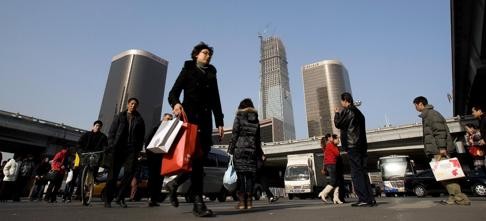
Chinese cities see surge in office rental costs

Nine of the 16 Chinese cities tracked in the SCMP-DTZ/Cushman & Wakefield office rental index witnessed triple-digit year-on-year growth last year.
The index focuses on office rental performance in the 16 cities. It was launched with a base value of 100 in the first quarter of 2013.
Nine cities recorded generally moderate rise in office market rents year on year while seven recorded varying degrees of decline, shows the latest quarterly survey. Changsha, Chongqing, Nanjing, Qingdao, Shanghai, Tianjin, and Xi’an all recorded net absorption last the year at historically high levels.
Despite a continued wave of office completions and the prospect of substantial supply hitting the market soon, office rents in Shenzhen and Shanghai have risen by 0.3 per cent and 1.9 per cent quarter on quarter, and 7.9 per cent and 4.4 per cent year on year. While the office market in Shanghai has been boosted by the Free Trade Zone, Qianhai has raised the demand in Shenzhen.
These two are among the nine cities that recorded generally moderate rise in office rents year on year.
In Dalian, a rising tide of bankruptcies by microfinance and peer-to-peer financial companies have caused tenant dislocation, in turn prompting owners of the city’s prime office properties to protect themselves against leasing risk by raising the standards for incoming tenants, said Andrew Ness, head of research for greater China at DTZ/Cushman & Wakefield.
This move towards greater exclusivity caused Dalian Grade A rents to tick up 2.7 per cent quarter on quarter.
“In Wuhan, where Grade A completions in 2015 were similarly constrained, rents ticked up 0.6 per cent quarter on quarter and 4.7 per cent year on year,” said Ness.

In Beijing, Grade A office rents not only remained stable across its five core sub-markets in 2015 but net absorption in the city’s core sub-markets reached the highest level since 2012.
Some cities saw a rental decline, with rents in Tianjin falling 2.1 per cent year on year and 0.2 per cent quarter on quarter. Rents in Changsha fell 7 per cent year on year.
Ness said Shenyang, Hangzhou, Xi’an and Chengdu all recorded rent drops for the whole of 2015.
“The future prospect for each of these cities is for continued softening in the office leasing market for at least the next two to three years as more projects come on stream,” he said.
While the scale of future supply in Chengdu would appear to be overwhelming, the fact that the city has been cited as one of the top 10 global cities for entrepreneurship and innovation suggests that demand for co-working space and other types of alternative workplace facilities may grow by leaps and bounds, said Ness.